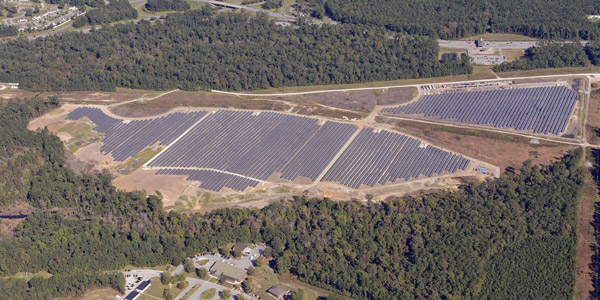By Rory D. Sweeney
Duke Energy is asking North Carolina officials to revisit state rules around renewables and provide the utility with greater control over what generation resources it must use, company executives said during a first-quarter earnings call Tuesday.
The largest utility in the U.S. posted a first-quarter profit of $716 million ($1.02/share) compared with $694 million ($1.01/share) a year ago. The increase was helped in part by last year’s acquisition of Piedmont Natural Gas.
Adjusted earnings per share were $1.04, down from $1.13 in the first quarter of 2016 and just missing analyst expectations. Executives attributed the decline to mild weather — along with the sale of Duke’s international energy business in December — and announced plans to cut about $100 million in expenses.
Duke’s electric business reported income of $635 million, down $9 million year over year, while earnings at its commercial renewable energy arm, which sells solar and wind power to other utilities and corporate customers, fell by $1 million to $25 million.
The company is pursuing two separate actions through North Carolina’s government to exert increased control over the generation it must use to serve customers.
First, Duke has asked the North Carolina Utilities Commission to reduce what the utility must pay qualified facilities under the Public Utility Regulatory Policies Act, which requires electric utilities to pay such facilities the avoided costs of not building traditional power plants. In its filing, Duke said that rate has dropped to $35/MWh from currently recognized rates of $55 to $85.
Company CEO Lynn Good said that action went to hearing in mid-April.
Duke is also lobbying members of the state legislature to develop an annual competitive process that sets out a determined volume of renewable resources.
“What’s being proposed is an opportunity to move this development of renewables and solar in the state into a more sustainable model,” Good said. “A competitive process would impact [the] price to customers and [we] believe that better planning and better pricing would create a more sustainable market. … We believe it’s costing customers about $1 billion more than a market price would cost them over a 12-year period.”
The explanation came as Good and other company executives described plans to shift renewable investment toward regulated jurisdictions rather than commercial. Duke has $2.5 billion slated in its five-year plan for such investments, about $1.5 billion for regulated regions and $1 billion in commercial.
“Returns are tight, [and] the tax position is uncertain for us at least over the next couple of years,” Good said. “We feel like we have a really strong portfolio of 3,000 MW [of] wind and solar, backed by a long-term contract.”
Good noted that the “majority” of Duke’s revenue in renewables comes from wind production tax credits as investment tax credits from solar construction dropped by a penny year over year.
She highlighted a $25 billion, 10-year plan for grid modernization, which includes investments to automatically reroute power and accelerate grid restoration when necessary. She also described plans to spend $4.9 billion to bury underground “select sections of poorly performing overhead lines, many located in hard-to-access areas” in the Carolinas.
“We found that our heaviest concentration of densely vegetated lands that cause outages are really preponderantly in the Carolinas,” said Lee Mazzocchi, of the company’s Grid Solutions group.
While Good touted a 2016 safety achievement award for Duke’s Midwestern local distribution companies, she omitted any discussion of environmental safety issues at coal ash piles that the company estimates will cost $5 billion to address. Only one question from analysts touched on the subject, and that was simply to ask if the company’s plans were changing in light of potential changes on the federal level.
Good said they were not.





